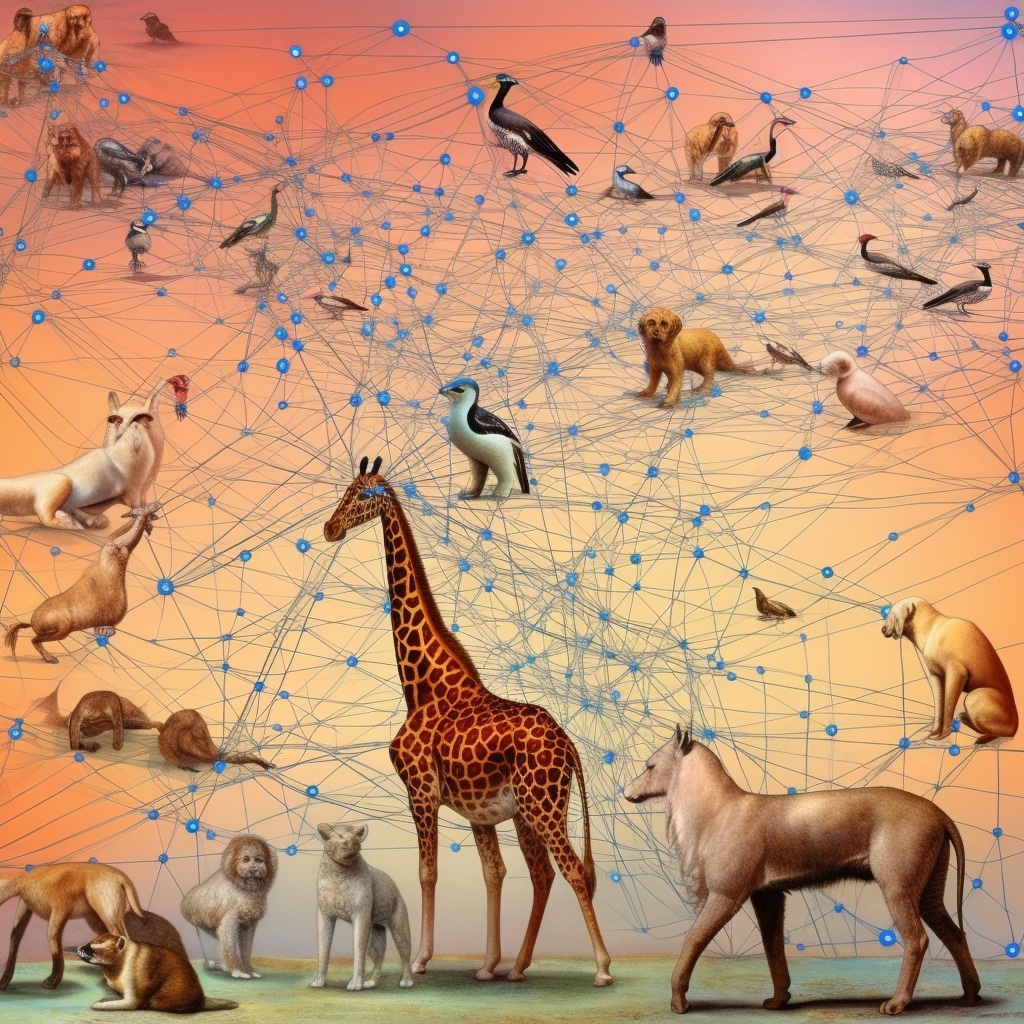In Artificial Intelligence, Generative AI is a subset that is making headlines every day. It specializes in the creation of new, original content. Whether generating realistic images, composing melodious music, or crafting human-like text, generative AI is all about producing something new that didn't exist before.
But how does generative AI manage to do this? It's all about learning from examples. Generative AI models are trained on large datasets - collections of images, music, or text - and learn to understand the patterns, structures, and intricacies within this data. Once trained, these models can generate new content that mirrors the style, tone, or visual aesthetic of the data they were trained on. In essence, they learn to mimic the given data set and then use that learning to create something new and unique.
Generative AI differs significantly from other types of AI, particularly discriminative models. While discriminative models are excellent at identifying and categorizing data (for example, classifying whether an email is spam), they don't create anything new. On the other hand, generative models take a step further. They don't just understand and categorize data; they use their understanding to generate new, original content.
Consider an AI trained to understand and generate paintings in the style of Vincent van Gogh. A discriminative model could look at a painting and tell you whether it's in the style of Van Gogh or not, but it couldn't create a new painting. A generative model, however, could analyze the patterns, colors, and brush strokes in Van Gogh's works and then use that knowledge to create an entirely new painting that resembles Van Gogh's style.

The space shuttle in the style of Van Gogh
To understand the inner workings of generative AI, let's first look at the concept of a Large Language Model (LLM), such as GPT-4.
In essence, LLMs are trained on enormous amounts of text data. They read and analyze billions of sentences and phrases to understand patterns, nuances, and language structure—one of the key concepts that LLMs like OpenAI’s GPT-4 use is word embeddings.
Word embeddings are a type of word representation that allows words with similar meanings to have a similar representation. They are a way for the AI to understand not only the definition of words but also their context and relationship with other words.
Imagine you're mapping every word the AI knows into a multidimensional space. Words that are often used in similar contexts or share some meaning would be closer together in this space, while unrelated words would be further apart. This spatial relationship helps the AI to comprehend the semantics and syntactic roles of words in a sentence.
Once the base model understands language through these embeddings, the next step is to apply this learning to a specific task. This is where transfer learning comes into play.
Transfer learning is a machine learning method where a model developed for one task is reused as the starting point for a model on a second task. It's like applying what you learned in one subject to a different but related subject.
In AI, we can take the general language understanding that our model has learned and fine-tune it on a more specific task, like answering questions about a specific topic or generating text in a particular style. This allows us to create highly specialized models without training them from scratch, saving time and computational resources.
Combining large language models, word embeddings, and transfer learning provides the foundation for generative AI. This mix enables AI not just to understand and generate human-like text, but to adapt its knowledge to a wide array of specific tasks and applications.

A generated artistic interpretation of a neural network doing transfer learning on a dataset of animals
One of the most notable benefits of Generative AI is its ability to automate content creation. Whether drafting emails, writing articles, creating social media posts, or even composing poetry, Generative AI can produce human-like text on a massive scale, reducing the time and effort required in manual content generation.
Generative AI is not just about automation; it's also about augmentation. Artists and designers can use Generative AI to spark creativity and innovation. For instance, musicians can use AI to generate new melodies, artists can create unique visual patterns, and writers can use it to brainstorm new ideas or plot lines.
Generative AI is also incredibly powerful when it comes to predictive analytics. By understanding patterns in historical data, Generative AI can generate predictions about future events. This capability has vast applications, from forecasting stock market trends to predicting weather patterns or customer behaviors.
Generative AI can be used to understand what "normal" looks like in a given dataset and then identify instances that deviate from this norm. This makes it an invaluable tool for anomaly detection in various fields, such as cybersecurity (identifying unusual network activity), healthcare (spotting abnormal patterns in medical imaging), and finance (detecting fraudulent transactions).
Generative AI also enables a high degree of personalization. For example, in digital marketing, AI can generate personalized emails or ads tailored to individual users' preferences and behaviors, enhancing customer engagement and satisfaction.

Some AI generated marketing materials created with a minimal prompt
As computing power grows and our understanding of AI deepens, we expect to see increasingly sophisticated Generative AI models. These models will be capable of understanding and generating more complex and nuanced content, whether text, images, music, or even 3D models.
Future developments in Generative AI will likely allow for greater customization and control over the generated output. This means users can guide the AI in producing content that aligns more closely with their specific needs and preferences.
As Generative AI continues to evolve, so will the discussions around its ethical and responsible use. Data privacy, content authenticity, and AI bias will remain important considerations. Expect to see more tools and techniques for ensuring that Generative AI is used in a way that's ethical, transparent, and fair.
Generative AI will also increasingly be integrated with other technologies, such as virtual and augmented reality, blockchain, and the Internet of Things. This integration could lead to exciting new applications, from AI-generated virtual worlds to smart devices capable of generating their own updates and improvements.
The future could also see the rise of personal AI assistants capable of generating content that's specifically tailored to the individual user. These assistants could help with everything from drafting emails and creating presentations to brainstorming ideas and designing personalized learning plans.
At Clarifai, we are committed to staying at the forefront of these developments, continually pushing the boundaries of what's possible with Generative AI. This technology has the potential to transform industries, ignite creativity, and enhance our lives in countless ways. The future of Generative AI is a journey of discovery and innovation, and we're excited to be part of it.

Your AI assistant is always willing to help!
© 2023 Clarifai, Inc. Terms of Service Content TakedownPrivacy Policy






© 2023 Clarifai, Inc. Terms of Service Content TakedownPrivacy Policy